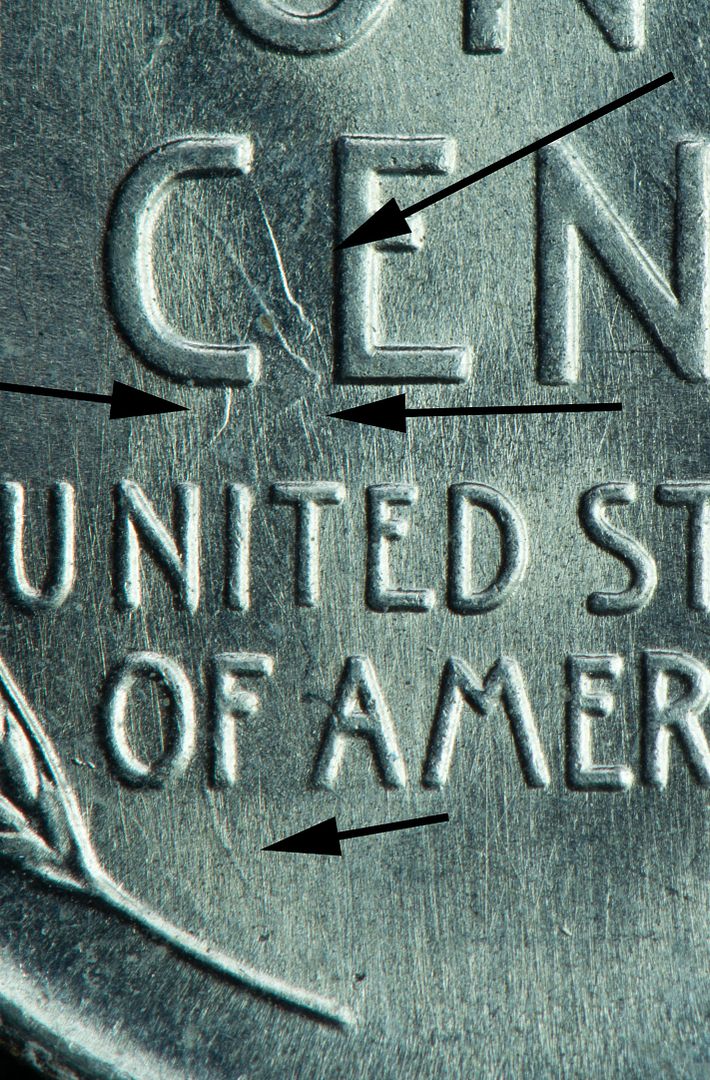Question on Die Clash terminology
I've found a 1943 Lincoln cent with what I believe may be a Type I counter die clash but I'm new to the whole world of die clashes so I was wondering if indeed this is what is considered a Type I counter die clash or ?
Thanks in advance


Thanks in advance


0
Comments
It is certainly clashing and it looks to be clash on top of clash. I'm no expert on these errors, though.
Here's a mock-up of a reverse with a fully clashed obverse.
Lance.
Looking at several 1943 cents there are some examples of
the same thing, but with slight variations in positioning and
differences where the marks go through the C & down to the
N & some to the I then through the O of OF, but in different
directions. Seems odd.
The first coin, an MS-68, shown in CoinFacts shows a good
example of it, but shifted slightly.
R.I.P. Bear
Vam World 1886 1c
I think it's more of a Progressive Indirect Design Transfer .
Here's a 56-D I have .
[URL=http://s1296.photobucket.com/user/stash38/media/A004 - 20160511_152921 2-horz_zpsfqatus7t.jpg.html]
Here's an image of the OP coin
[URL=http://s1296.photobucket.com/user/stash38/media/347_zpsza1ficpn.jpg.html]
Your coin has design transfer from multiple die clashes near the C in CENT.
Your coin does not show a "counter-clash," which is when clash marks are transferred back to the original die during a multiple clash where the dies shifted relative to each other between clashes. On the reverse die, you'd see an additional outline from the C in CENT. On the obverse, you'd see an additional outline of Lincoln's lower hair and top rear of the coat. This can look a little like a doubled die, but isn't. Your coin may have this, since it the dies clashed multiple times with a shift between clashes, but I don't see it on the reverse.
Keeper of the VAM Catalog • Professional Coin Imaging • Prime Number Set • World Coins in Early America • British Trade Dollars • Variety Attribution